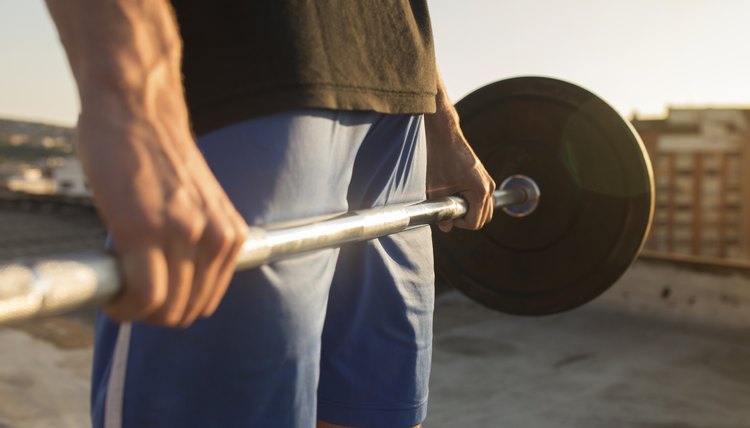What does fact checked mean?
At SportsRec, we strive to deliver objective content that is accurate and up-to-date. Our team periodically reviews articles in order to ensure content quality. The sources cited below consist of evidence from peer-reviewed journals, prominent medical organizations, academic associations, and government data.
- Medicine and Science in Sports and Exercise: Relationship Between Rearfoot and Forefoot Orientation and Ground Reaction Forces During Running
- Medicine and Science in Sports and Exercise: Relationship Between Rearfoot and Forefoot Orientation and Ground Reaction Forces During Running
- Medicine and Science in Sports and Exericse: The Effects of Knee Contact Angle on Impact Forces and Accelerations
- Medicine and Science in Sports and Exericse: The Effects of Knee Contact Angle on Impact Forces and Accelerations
- Journal of Nutrition: Exercise Promotes Bcaa Catabolism: Effects of Bcaa Supplementation on Skeletal Muscle During Exercise
- Journal of Nutrition: Exercise Promotes Bcaa Catabolism: Effects of Bcaa Supplementation on Skeletal Muscle During Exercise
The information contained on this site is for informational purposes only, and should not be used as a substitute for the advice of a professional health care provider. Please check with the appropriate physician regarding health questions and concerns. Although we strive to deliver accurate and up-to-date information, no guarantee to that effect is made.
How to Run After Performing Deadlifts

Running provides numerous benefits, including improved speed and fat loss. Running after deadlifting presents certain difficulties, including fatigue and muscle soreness. Running immediately after deadlifting becomes an issue of endurance and running during a second training session becomes a question of long-term fatigue. Running the next day often becomes an issue of delayed-onset muscle soreness. All solutions are workable, but all require extra effort and practice. Consult a health care provider before beginning any training program.
Run using only a modest pace, but ensure you are striking properly on the ball of your foot when you run. Landing on your heels reduces the activation of your calf muscle, and increases the stress on your lower back.
Run using an interval program. Immediately after a deadlift workout, long-distance running will further stress your back. Instead, run sprints followed by recover sessions. Sprint 50 m, then walk back, then sprint again. This allows you to cover ground, burn fat and build speed.
Run at a modest pace for less than you maximum distance. If you have deadlifted earlier in the day, your endurance may be compromised. Do not schedule your longest run on the same day as a deadlift workout. Run for no more than 80 percent of your maximum distance, and run for no more than 90 percent of your maximum speed during a running session that follows a resistance training workout.
Run for power the day after a deadlift workout. The soreness and fatigue the day after a deadlift workout will limit your speed and endurance, so work on building good technique. Run up hills, which helps develop proper foot strike, and the extra effort will force your legs to work harder, improving your conditioning.
Warm up thoroughly, even though you may have recently trained. If it is later in the day, you may not require as much extra warm-up as the next day. Walking on a treadmill or lunges will help warm and stretch the muscles that you previously trained.
Tips
Drink at least 64 oz. of water per day. Supplement with branched-chain amino acids to help relieve muscle soreness and pain.
Warnings
Never lift without a spotter. If you feel pain when running, stop immediately.
References
- Medicine and Science in Sports and Exercise: Relationship Between Rearfoot and Forefoot Orientation and Ground Reaction Forces During Running
- Medicine and Science in Sports and Exericse: The Effects of Knee Contact Angle on Impact Forces and Accelerations
- Running in the Zone: A Handbook for Seasoned Athletes; Steve King, et al.
- Journal of Nutrition: Exercise Promotes Bcaa Catabolism: Effects of Bcaa Supplementation on Skeletal Muscle During Exercise
Writer Bio
Grey Evans began writing professionally in 1985. Her work has been published in "Metabolics" and the "Journal of Nutrition." Gibbs holds a Ph.D. in nutrition from Ohio State University and an M.S. in physical therapy from New York University. She has worked at the Olympic Training Center in Colorado Springs and currently develops comprehensive nutritional and rehabilitative programs for a neurological team.
